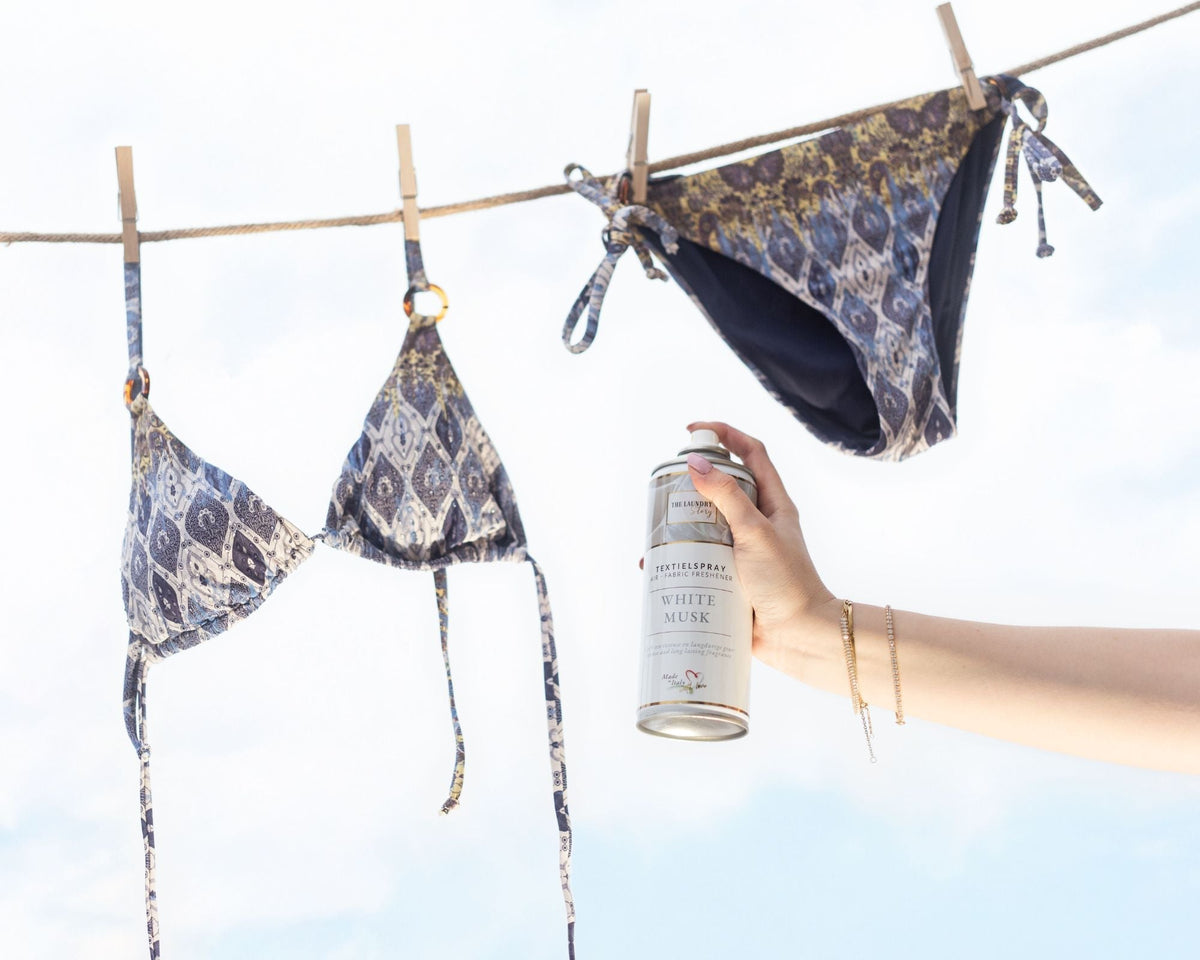
Cleaning swimwear: do's and don'ts
|
|
Time to read 3 min
|
|
Time to read 3 min
Summer is just around the corner, which means it’s time to get your favorite swimwear out of the closet. But how do you keep your swimsuit or bikini looking fresh and new season after season? With the right care and cleaning techniques, you can significantly extend the life of your swimwear. Discover the do’s and don’ts of washing swimwear here!
Contents
Swimwear is often made of delicate fabrics that require special care when washing. By using the correct washing method, you protect the quality and lifespan of your swimwear.
It is advisable to always use a mild detergent that is specially developed for delicate laundry. The detergents from The Laundry Story are extremely suitable for this. These detergents are gentle on the delicate fabrics of your swimwear and help prevent color fading. This way, your swimwear will continue to look new for longer.
Have you just spent a wonderful day at the beach or in the pool? Then it is important to rinse your swimwear thoroughly immediately after use.
If your swimwear is not cleaned properly, salt and chlorine can damage the fabric over time. Salt and chlorine are very aggressive for the materials your swimwear is made of. If you do not wash your clothing, these substances can seep into the fabric and cause your swimwear to fade, fray or even break faster.
It is therefore essential to rinse your swimwear under cold water immediately after use. Do this carefully, so that all salt and chlorine disappear completely from the fabric. This prevents damage to your favorite swimming trunks, bikini or swimsuit and your swimwear will last longer.
After rinsing, it is also important to let your swimwear dry properly, preferably in the fresh air. Hang your swimwear in a dry, well-ventilated place so that all moisture can evaporate quickly. Avoid drying in the dryer, because the heat can also damage the fabric.
Hand washing your swimwear will help to retain its shape and colour better than washing it in a washing machine. Start by filling a sink with cold water and adding a small amount of mild detergent. For an extra fresh scent, add a few drops of your favourite laundry perfume . Then, soak your swimwear in the soapy water for a few minutes. Gently move the garments back and forth to remove dirt and salt.
This manual method is especially recommended for delicate materials such as lycra or nylon. By not turning the garments in the washing machine, you prevent them from becoming deformed or damaged. In addition, you can better control the washing temperature, which is important to extend the life of your swimwear.
View this post on Instagram
After washing, it is advisable to gently wring out your swimwear and let it dry on a towel or clothes horse. Avoid using the tumble dryer, as the high temperatures can damage the fabric. By following these simple steps, you can be sure that your swimwear will look and perform better for longer during your next swim.
Fabric softeners can affect the elasticity of swimwear and can cause the fabric to wear out faster. Instead, use a few drops of The Laundry Story laundry perfume to give your swimwear a lovely scent without damaging the fibers.
Lay your swimsuit flat on a dry towel to dry. Avoid direct sunlight, as UV rays can fade the color of your swimsuit. Turn your swimsuit over regularly to promote even drying.
With the right care, your swimwear will last longer and continue to look beautiful. By using The Laundry Story detergents and laundry perfumes , you can keep your swimwear wonderfully fresh, season after season.
By following these tips and using The Laundry Story products you can really enjoy your swimwear!
